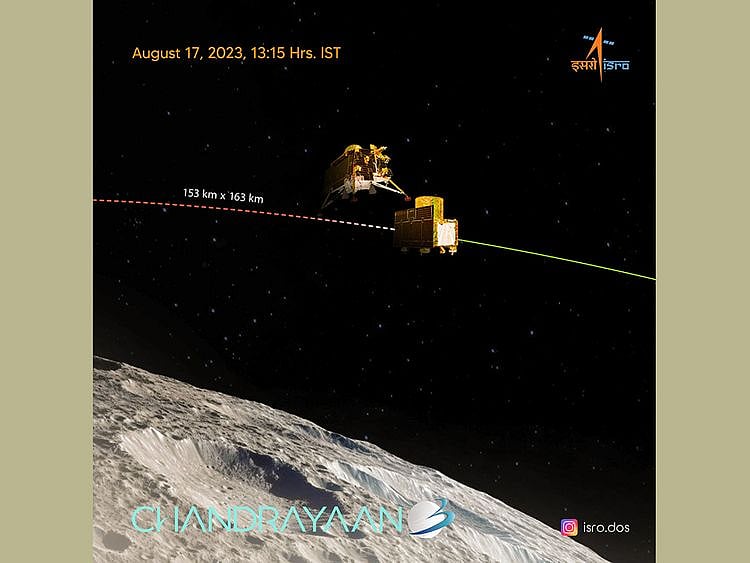Indian lunar lander splits from propulsion module in key step
Lander expected to touch down near Moon’s south pole between August 23 and 24

New Delhi: India’s latest space mission completed a key step in the country’s second attempt at a lunar landing, with its Moon module separating from its propulsion section on Thursday.
The Indian Space Research Organisation (ISRO) confirmed that the lander module of the Chandrayaan-3, which means “Mooncraft” in Sanskrit, had “successfully separated” from the propulsion module six days ahead of a planned landing slated for August 23.
“Thanks for the ride, mate!” ISRO said in a post on the social media platform X.
ISRO said the propulsion module now “continues its journey in the current orbit for months/years” as part of efforts to study exoplanets, or planets outside Earth’s solar system.
Instruments onboard will “perform spectroscopic study of the Earth’s atmosphere and measure the variations in polarisation from the clouds on Earth - to accumulate signatures of Exoplanets that would qualify for our habitability!”
The world’s most populous nation has a comparatively low-budget aerospace programme, but is rapidly closing in on the milestones set by global space powers.
Only Russia, the United States and China have previously achieved a controlled landing on the lunar surface.
If the rest of the current mission goes to plan, the lander will safely touch down near the Moon’s little-explored south pole between August 23 and 24.
India’s last attempt to do so ended in failure four years ago when ground control lost contact moments before landing.
Developed by ISRO, Chandrayaan-3 includes a lander module named Vikram, which means “valour” in Sanskrit, and a rover named Pragyan, Sanskrit for “wisdom”.
The mission comes with a price tag of $74.6 million - far lower than those of other countries, and a testament to India’s frugal space engineering.
The rover has a mission life of one lunar day, or 14 Earth days.
ISRO chief S. Somanath has said his engineers carefully studied data from the last failed mission and tried their best to fix the glitches.
India’s space programme has grown considerably in size and momentum since it first sent a probe to orbit the Moon in 2008.
Sign up for the Daily Briefing
Get the latest news and updates straight to your inbox
Network Links
GN StoreDownload our app
© Al Nisr Publishing LLC 2025. All rights reserved.